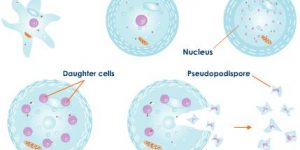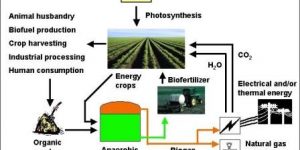Many people seem to think that evolution is something that happened many years ago, and thus it is tough to witness nowadays. However, if you look closely, evolution is happening constantly. Species are being ‘naturally’ selected due to their genetic traits. Those that come out on top are much more likely to survive. Let’s take a little look at 5 examples of evolution which have been witnessed.
Peppered Moth
This is one of the classic examples of evolution, and if you have been studying it for a while then you will know what it is all about. In the past, the majority of peppered moths were light in colour in order to protect the moth from predators. There were some dark peppered moths, but they only made up around 2% of the population. However, after the industrial revolution the numbers took a massive turn. Suddenly 95% of the moths were dark. This can be explained as the light moths were no longer able to ‘hide’ in the pollution and thus they were targeted. This is one of the most modern examples.
Crabs & Mussels
This is a behaviour which only occurs in New England. Here there is a crab known as the Asian Shore Crab which is a pest, basically, it eats all of the mussels in the area. However, these mussels seem to have developed the ability to give themselves a thicker shell if danger presents itself in the area. The thing that has been observed here is that these mussels will only thicken their shells (and have learned to) when Asian Shore Crabs are in abundance. Those areas where they aren’t, the mussels haven’t yet ‘learned’ to detect that this type of crab is a threat.
Italian Wall Lizards
This story began in 1971 when ten Italian wall lizards were introduced from one island to another. They were then left alone for decades. It seems that over time the lizards had begun to adapt. When they were moved they were most insectivores, however, they began to adapt to eat the vegetation. This had led to a head which was bigger and had a more powerful bite. Their intestines had even changed to break down the food much quicker. It shows just how quickly evolution can get to work when species are exposed to an environment they are unfamiliar with, and of course, just how startling the changes can be to allow the new species to adapt to an environment.
Darwin’s Finches
If anybody has read Darwin’s research then they will be more than familiar with the finches that he mentioned. Every year these finches are observed for changes in their body, and changes have been noticed depending on the food situation at the time, for example development of stronger beaks when there is only really nuts to eat. The story of Darwin’s finches really has a lot of research carried out on it, and it is certainly something which is worth reading about.
E.Coli
It isn’t just natural evolution in the wild that needs to be considered. There is a lot of research going on in a laboratory environment. The purpose of this research is to look at how pathogens become drug resistant. In a lab, scientists are looking at the evolution of the E. Coli bacteria, and it has shown real evidence of evolution, and it has shown just how quick it can happen, and how something can adapt to its environment.



These are all examples of different phenotype expressions of existing genomic information. Might be called devolution.
Are the any examples of intermediate stages of new biological forms or functions. Needs to be something not already perfect, and likely to be dysfunctional if changes are made.
Thanks.
The examples of macroevolution you are asking about are obviously harder to track/specify how they happened, since those consist of more steps of different mutations. The hox-genes, however, has a lot to do with animal’s body plan, and mutations there can change the apperance and function quite drastically: like fins becoming legs, though still not in one single step.
There are also the instance of crossbreeding. When two different species or subspecies successfully reproduce, the combination of those genes can cause a relativly new apperence among their offspring. This is mostly seen in plants, and it is proven that some new species occured this way.
Why are there no references? I am having trouble finding papers written on these subjects because of useless articles like this clogging up my search results.